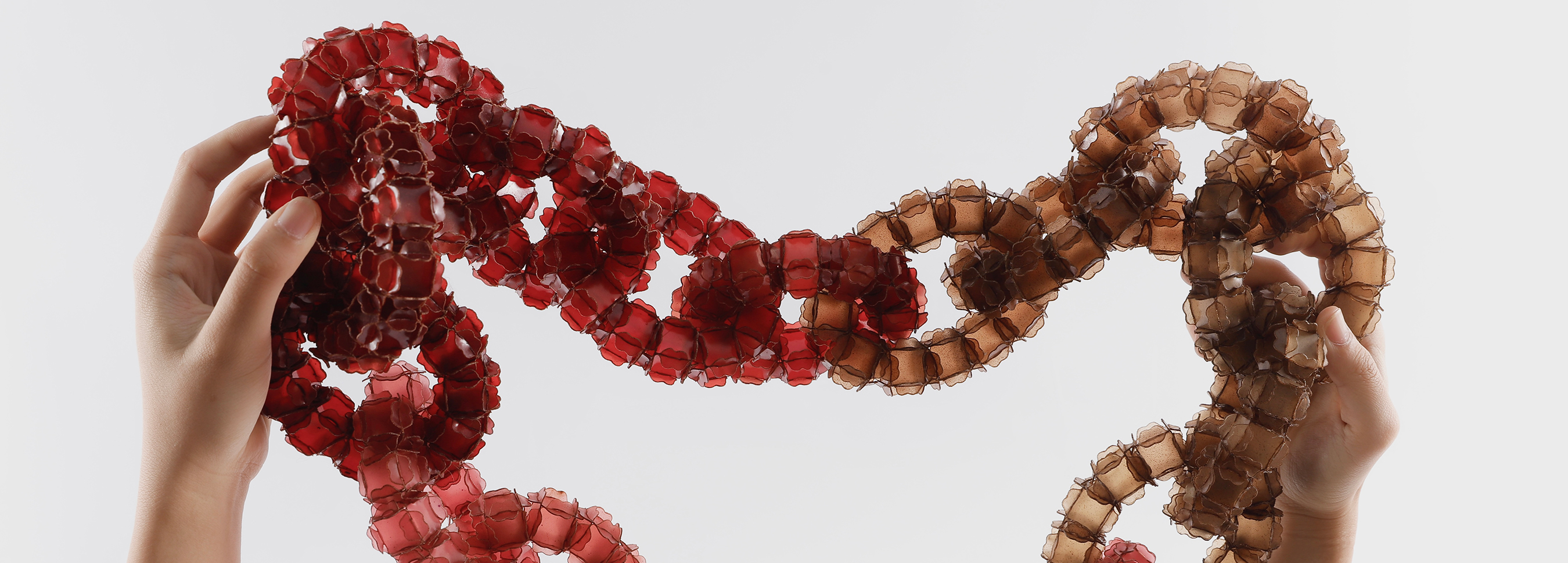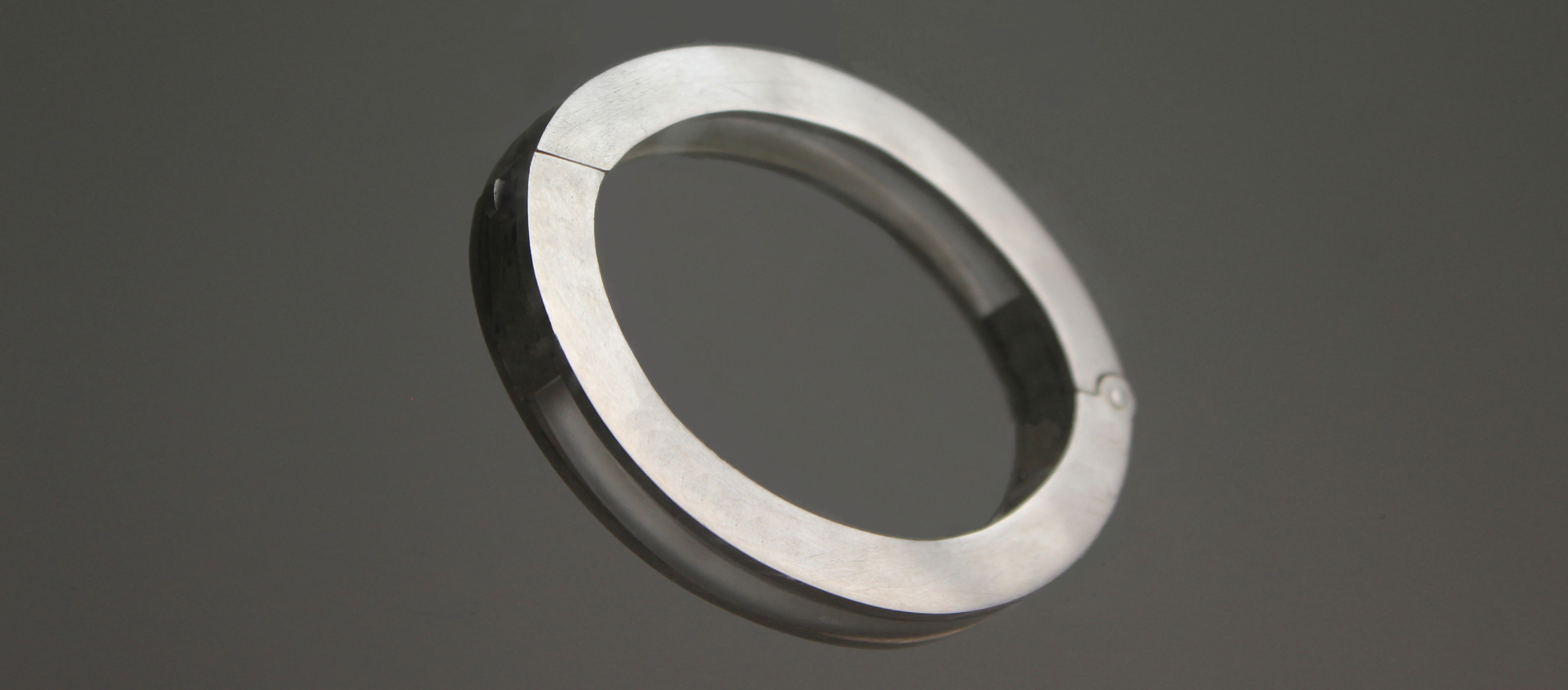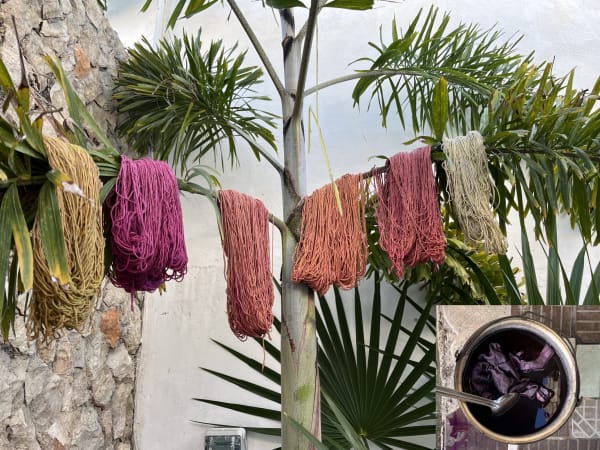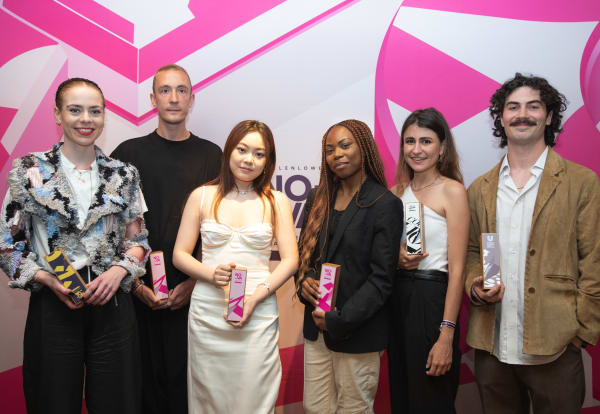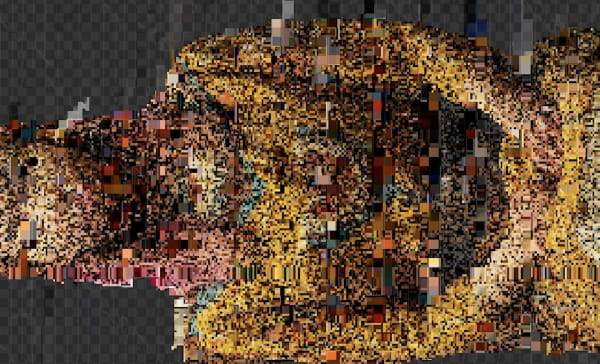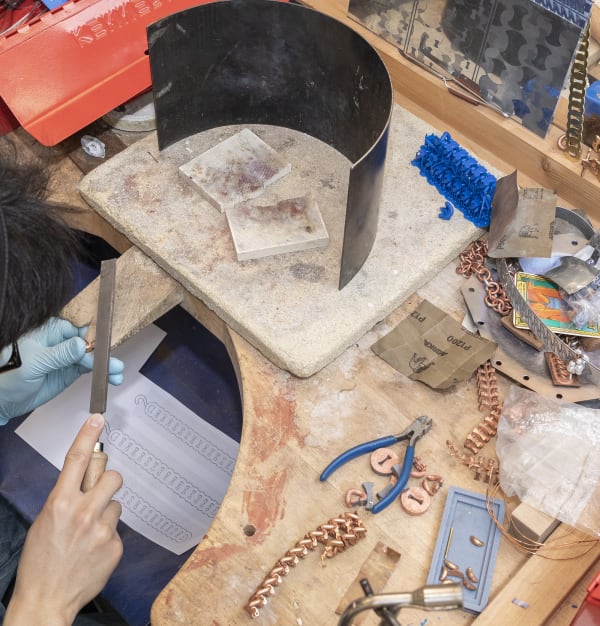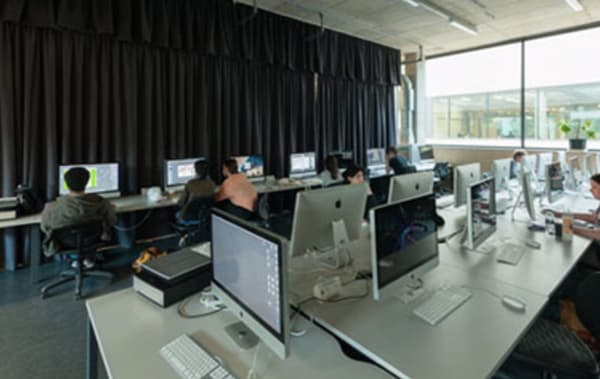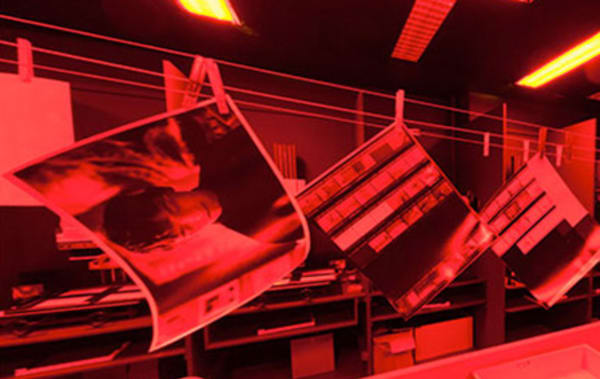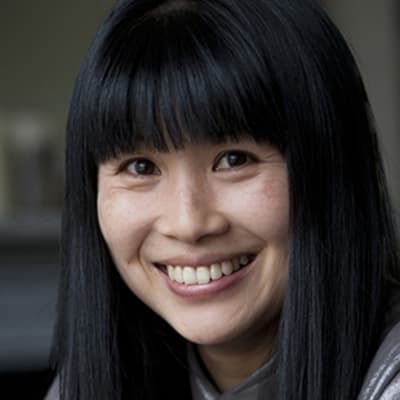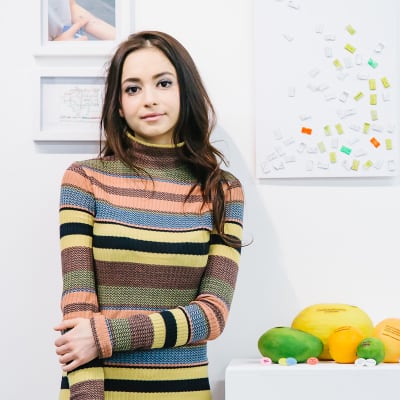Course units
The BA Jewellery Design progressively builds your knowledge and skills in designing and making jewellery. Alongside this, it develops your understanding of professional approaches and contexts. The creation of original jewellery relies on imaginative and observational skills. On the course, you will develop these through a number of projects, looking at a range of different starting points and references.
Throughout the course you will be asked to consider the social, environmental, cultural, sustainable and ethical position of your work, and the impact of the materials and processes you employ.
Stage 1
Unit 1: Introduction to Study in Higher Education: Jewellery
Unit 2: Introducing Jewellery Skills
Unit 3: Developing Jewellery Skills & Contextual Knowledge
Unit 4: Creative Unions
In Stage 1, you will learn technical processes through talks, demonstrations and inductions. Projects are largely concerned with handmaking with a focus on gaining confidence in working in metal. Unit 2 covers basic workshop practice, fundamental design and making skills and creative thinking. In Unit 3 you will develop your design work. You will undertake project briefs, which require you to design for criteria such as a specific fashion or cultural context. Unit 4 will introduce you to collaborative models of practice and develop your understanding of different environmental and social contexts.
Stage 2
Unit 5: Research Methods and Approaches (Jewellery)
Unit 6: Different Approaches
Unit 7: Different Contexts
Unit 8: Exploration and Focus
In Stage 2, you will consider different approaches to jewellery design and continue to develop your knowledge and skills. You will learn about batch production processes, computer-aided design and manufacture to build on your practical making skills. You will be encouraged to develop an individual identity and a personal perspective in your designs. Investigation of contemporary cultural contexts will be important in Stage 2, where you will examine ethical, sustainable and social issues, and how they relate to jewellery and your own work. You will also focus on professional criteria, studying a range of possible contexts for jewellery designers to operate in. These include designing for companies, designing and prototyping for production. You will begin to consider possible future careers. Where possible, there will also be opportunity to present your work to an external audience.
Stage 3
Unit 9: Pilot Collection
Unit 10: Dissertation
Unit 11: Collection
The work in Stage 3 is mostly self-directed. You will take time to consider the direction and approach you want to pursue. You will work on a significant body of work, where materials, forms and ideas will be tested and resolved to form a pilot collection. This collection will form the basis for the realisation of a wider collection in Unit 11. This will give you the chance to manage your workload independently, demonstrating both personal and professional development. You will examine wider cultural contexts and the positionality of your work in relation to ethical, sustainable and social issues.
In Unit 10, you will demonstrate your research and critical skills, testing your ability to sustain a focused study of your chosen subject. Completion of a dissertation involves systematic analysis of a chosen aspect of visual, spatial, material, textual culture or practice. In some cases, students may wish to place greater emphasis on the dissertation. There is a route in place to accommodate this which you must make an application for.
Optional Diploma Year
Industry Diploma in Professional Studies (DIPS)
This optional diploma can be taken between years 2 and 3. With support from your tutors, you will undertake an industry placement for a minimum of 100 days/20 weeks. As well as developing industry skills, you will gain an additional qualification upon successful completion.
CCI Creative Computing
Between years 2 and 3, you can undertake the year-long Diploma in Creative Computing. This will develop your skills in creative computing alongside your degree. After successfully completing the diploma and your undergraduate degree, you will graduate with an enhanced degree: BA (Hons) Jewellery Design (with Creative Computing).
CCI Apple Diploma
Between years 2 and 3, you can undertake the year-long Diploma in Apple Development. This will give you an opportunity to become an accredited apple developer alongside your degree. After successfully completing the diploma and your undergraduate degree, you will graduate with an enhanced degree: BA (Hons) Jewellery Design (with Apple Development).
Mode of study
BA Jewellery Design runs for 90 weeks in full-time mode. It is divided into three stages over three academic years. Each stage lasts 30 weeks.
You will be expected to commit 40 hours per week to study, which includes teaching time and independent study.
CSM Academic Support is delivered by a team of academics and practitioners working alongside your course to help you progress and achieve your maximum potential as a student. Academic Support can help you to develop your skills in different areas, including critical thinking, research and writing, time management, presentations and working independently and collaboratively. These may be offered as part of your timetabled classes or as bookable tutorials and workshops.
Credit and award requirements
The course is credit-rated at 360 credits, with 120 credits at each stage (level). On successfully completing the course, you will gain a Bachelor of Arts with Honours (BA Hons degree).
Under the Framework for Higher Education Qualifications the stages for a BA are: Stage 1 (Level 4), Stage 2 (Level 5) and Stage 3 (Level 6). In order to progress to the next stage, all units of the preceding stage must normally be passed: 120 credits must be achieved in each stage. The classification of the award will be derived from the marks of units in Stages 2 and 3 or only Stage 3, using a dual algorithm.
If you are unable to continue on the course, a Certificate of Higher Education (CertHE) will normally be offered following the successful completion of Level 4 (or 120 credits), or a Diploma in Higher Education (DipHE) following the successful completion of Level 5 (or 240 credits).
